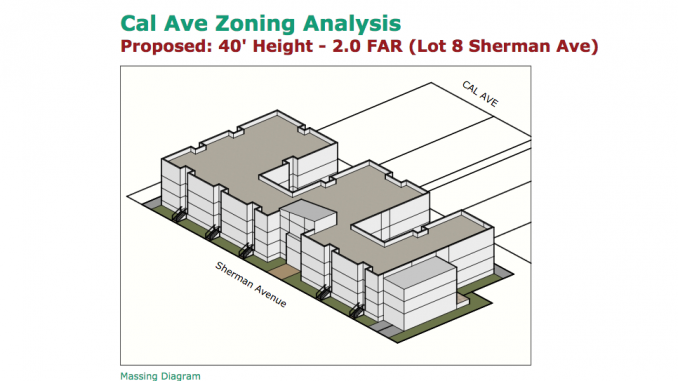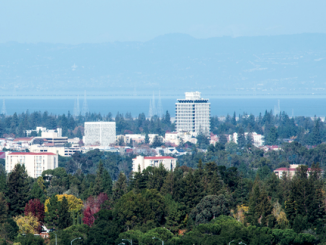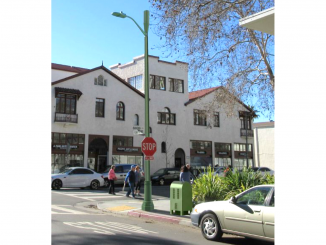
BY ELAINE GOODMAN
Daily Post Correspondent
Allowing rooftop decks to fulfill open-space requirements for new housing projects and easing density restrictions are potential strategies to encourage housing production that the Palo Alto City Council will discuss tonight (Jan. 28).
The item is a continuation of the council’s discussions on Nov. 26 and Dec. 3 of possible zoning changes. While the previous discussions focused on downtown and multi-family residential zones, next week the attention will turn to the California Avenue and El Camino Real commercial areas.
The strategies proposed for each of the areas are similar. For example, the council voted last month to allow rooftop decks to provide up to 75% of the required open space for multi-family residential projects downtown. The proposals for the California Avenue district and the El Camino area, to be discussed next week, would allow rooftop decks to account for up to 60% of required open space.
Standards addressing issues such as lighting, landscaping and noise would apply to the rooftop decks.
More density
For housing projects downtown, council voted last month to eliminate a maximum density of 40 units per acre and offer a housing incentive program, in which developers could apply for a three fold increase in floor area compared to what would normally be allowed for a project’s residential space.
The council will consider similar proposals for California Avenue and El Camino Real.
The council voted last month to allow housing-only projects, without a retail component, to be built in some downtown areas. In other parts of downtown, developers would still need to include retail as part of multi-family projects. For affordable housing projects, no retail would be required throughout most, but not all, of the city, the council decided last month.
The package of zoning changes for the different part of the city are all contained in a single housing ordinance. The council is scheduled to vote next week on whether to give initial approval to the ordinance, which would then return for final approval.
Although the council voted last month on certain elements of the ordinance, it’s possible that council members could change their minds — especially with a new council seated this month. The formerly nine-member council has been reduced to seven members, three council members have departed, and new council member Alison Cormack is now on board.
Despite concerns about the city’s housing crisis, the nine-member City Council failed to approve more housing than was taken off the market last year.
Taller buildings
The changes in the proposed housing ordinance would be in addition to the city’s already approved Affordable Housing Combining District, a zoning overlay for commercial areas that developers of affordable housing projects may request. The project must be within a half mile of a major transit stop or a quarter mile of a “high-quality transit corridor.”
If the city approves the overlay, the housing project may be taller and denser than what would ordinarily be allowed. The developer can also ask for a waiver from a requirement to include retail in the project. That way a project that is 100% housing can be built.
The City Council two weeks ago approved the affordable housing overlay for the first time, for an affordable housing project at 3705 El Camino Real. The project also received a waiver from including retail.
The nonprofit Palo Alto Housing plans to build 59 units of below-market-rate housing there, replacing buildings that are home to Treasure Island Stamps and Coins, Nouvelle Bridal, Family Fashion Cuts and Euromart. The project, called Wilton Court, qualifies for the overlay because of its closeness to the Valley Transportation Authority bus route on El Camino Real.
The project brings the city about 19% of the way to its goal of approving roughly 315 net new housing units this year, City Manager Ed Shikada said in a report.
The affordable housing overlay may be applied within commercial districts that include parts of downtown, the California Avenue district, Stanford Shopping Center, and some of the El Camino Real corridor.


